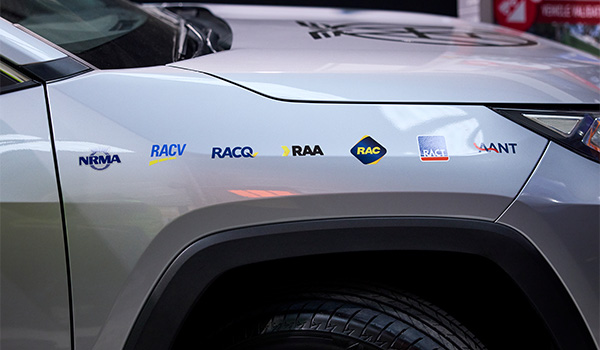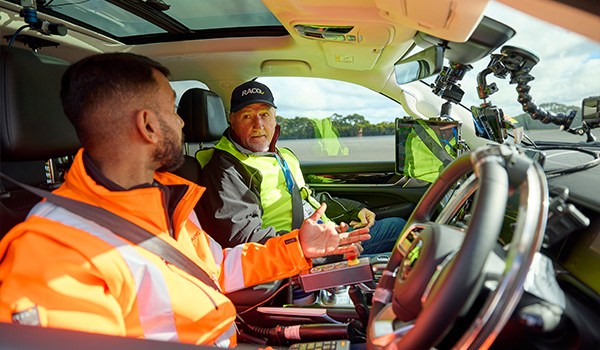Tucked away in dense bushland 45km inland from Victoria’s iconic Bells Beach, the Australian Automotive Research Centre (AARC) is possibly one of the country’s best-kept secrets.
Accessed via a series of inconspicuous gravel roads and with little signage, the AARC offers a deliberately nondescript frontage to sparse passing traffic on dusty Gum Flats Road.
We’ve driven the 90 minutes from Melbourne to an industry open day at the AARC hosted by ABMARC, one of Australia’s leading transport engineering consultancies and a regular client of the facility.
ABMARC, which stands for Automotive Benchmark Reporting and Consulting, is the organisation commissioned by the Australian Automobile Association (AAA) to conduct the nation’s first independent Real-World Testing Program.
The four-year $14 million program, funded by the Australian Government, is designed to provide consumers with more information on new vehicle fuel consumption and emissions.

We’re meeting some of the specialist engineers who conduct the testing to better understand the protocols and processes involved.
We were also promised a look at other test programs at the busy facility, including ANCAP safety tests and a new driver distraction study.
Over coffee, we were introduced to ABMARC Managing Director Natalie Roberts, who explained that the open-road test component of the Real-World Testing Program occurred around Geelong, some 50km away.
However, the AARC plays a crucial role in ABMARC's other work, including testing Advanced Driver Assistance Systems (ADAS).
A qualified aerospace engineer, Ms Roberts previously worked for Holden in powertrain calibration and Toyota where she led strategic planning and research for the Australian and Middle Eastern vehicle markets, before establishing ABMARC in 2010.
“ABMARC now has more than a decade of experience in vehicle testing, engineering, research and a range of other services across the automotive sector,” Ms Roberts said.
Our emphasis is on providing the best evidence-based and client-focused solutions, catering to light and heavy vehicle applications
Also on hand was AAA’s Real-World Testing Program Director Jason Smith, who told us the initiative had so far released results for 58 light vehicles.
Twenty of these had on-road fuel consumption results that were between 6% and 31% higher than their mandated laboratory tests.
He said this was valuable information for people purchasing a new vehicle.
Elsewhere, Jon-Paul Cavallaro, a senior researcher at the University of Newcastle, discussed his research into how the rapidly evolving Human Machine Interfaces (HMIs) in modern vehicles may be contributing to driver distraction.
Many modern vehicles have several methods, such as touchscreens, steering wheel controls, or voice control for drivers to operate entertainment, navigation, telecommunications, cabin temperature and other non-driving functions.
These touchscreens and other technologies often demand more precise attention than conventional physical controls such as buttons, with some experts warning this may pose similar distraction risks to using a mobile phone while driving.
Mr Cavallaro’s research is part of the AAA’s Road Safety Research Program.
It aims to develop a scientifically validated mechanism for evaluating and comparing the extent to which vehicle HMIs affect distractibility.
A bus tour of the expansive AARC facility followed, with Operations Manager Scott Martella explaining that the 1000ha site was first established in the 1960s by International Harvester to test and develop its trucks, tractors and agricultural equipment.
It’s been owned by Australian transport, logistics and supply-chain heavyweight Linfox since 1991 and has been extensively upgraded to accommodate testing of passenger cars, four-wheel drives, heavy trucks and mining equipment.
The facility has a complex network of roads and tracks for vehicle testing, but we’re headed for a skidpan inside one of the durability circuits. Our final exercise for the day involved sitting in a vehicle to experience two different ADAS tests.
The first involved an Automated Emergency Braking (AEB) test designed to demonstrate the vehicle’s response to a target vehicle and a pedestrian without driver intervention.
Despite being conducted at a relatively modest 40km/h and 20km/h respectively, the experience of sitting in a vehicle being driven directly at an object and knowing the driver won’t brake proves suitably attention-grabbing.
The second ADAS test involved demonstrating a lane-support system test to show how a vehicle responds when it begins to move out of its lane.
The test vehicle had a human driver but was also fitted with a complex robotic driving device which, upon command, took control of the car and automatically steered towards the road edge.

GPS equipment on the car roof and a bank of onboard computers in the back seat record how the lane support technologies respond to the sudden steering input.
Thankfully, in this instance, the car detected the rogue steering input and correctly returned to its lane without taking us on an off-road adventure.
A new ANCAP pilot research program is investigating the real-world driver experience and usability of such systems.
While it may be tempting to believe that significant Australian automotive product development ended when our last domestic car maker closed its doors in 2017, our visit to the AARC showed how organisations such as ABMARC, ANCAP, the AAA and others continue to conduct extensive local testing resulting in positive contributions to the safety and environmental credentials of new vehicles sold here.





